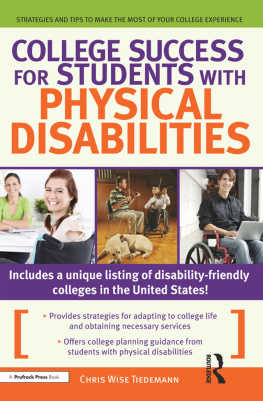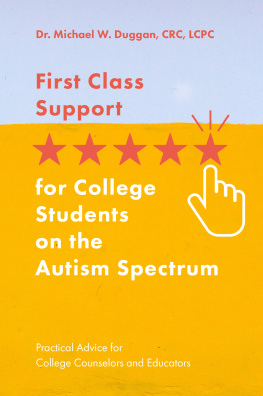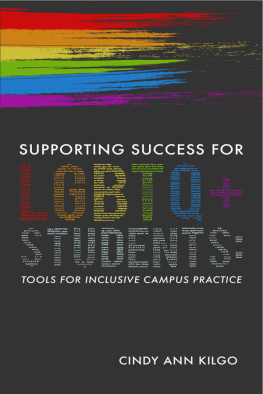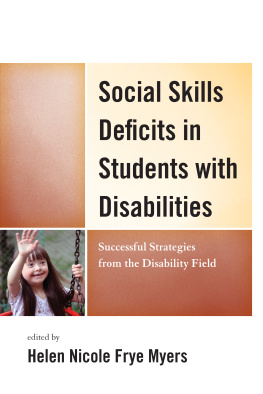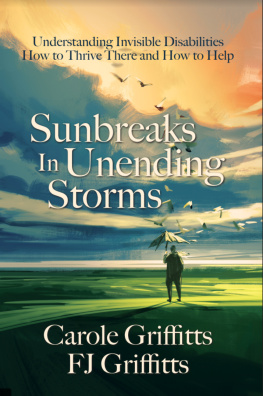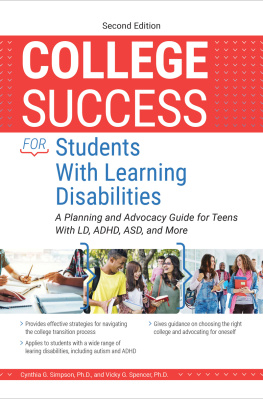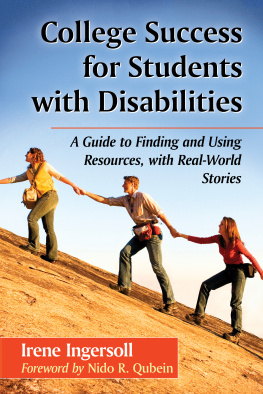
Supporting College and University Students with Invisible Disabilities provides clear and focused explanations of important concepts in the field of disability. This is information that all administrators and faculty should know when working with students with invisible disabilities. The chapters provide necessary legal explanations, address the myths around invisible disability, and provide useful guides and strategies to help administrators and faculty work with students. As an administrator and faculty member, I found this text invaluable. I highly recommend it.
K. Alex Ilyasova, Director of the Professional and
Technical Writing program in the English Department at
the University of Colorado at Colorado Springs
This book is an invaluable guide for understanding and including students with disabilities in post-secondary institutions. The descriptive information about developmental and emotional issues truly enables the reader to identify with someone struggling with a particular issue, while simultaneously learning scientific and practical applications. The author convincingly identifies the social imperative to improve the way we include students with learning and emotional challenges, and offers provocative ideas for institutional changes that feel doable and make sense.
Sarita Freedman, Ph.D, Licensed Psychologist and author of Developing
College Skills in Students with Autism and Aspergers Syndrome
In this book, Dr. Christy Oslund uses academic research, pedagogical experience, and common sense to help faculty, administrators, and staff in academic settings navigate one of the most prevalent issues in higher education today: understanding and accommodating invisible disabilities. Employing a gentle humor immediately relatable to other educators, Oslund provides practical information on how these invisible disabilities affect students, parents, and colleagues while providing actionable ideas for making campuses better environments for everyone.
Casey J Rudkin, Ph.D, Department of Writing, Linguistics
and Creative Process, Western Connecticut State University
This book should be required reading for all higher education instructors. In thoughtful yet practical terms, Dr. Oslund illustrates how to recognize and respond to diverse learners, which is an ethical and moral necessity too often neglected during new teacher orientations and the competing demands of ongoing professional life.
Moe Folk, Ph.D, Assistant Professor of English,
Kutztown University of Pennsylvania
SUPPORTING COLLEGE AND UNIVERSITY
STUDENTS WITH INVISIBLE DISABILITIES
by the same author
Succeeding as a Student in the STEM Fields with an Invisible Disability
A College Handbook for Science, Technology, Engineering, and Math Students with Autism, ADD, Affective Disorders, or Learning Difficulties and their Families
ISBN 978 1 84905 947 3
eISBN 978 0 85700 817 6
of related interest
Developing College Skills in Students with Autism and Aspergers Syndrome
Sarita Freedman
Foreword by Tony Attwood
ISBN 978 1 84310 917 4
eISBN 978 0 85700 292 1
The Autism Spectrum and Further Education
A Guide to Good Practice
Christine Breakey
ISBN 978 1 84310 382 0
eISBN 978 1 84642 531 8
Transition or Transformation?
Helping young people with Autistic Spectrum Disorder set out on a hopeful road towards their adult lives
John Clements, Julia Hardy and Stephanie Lord
ISBN 978 1 84310 964 8
eISBN 978 0 85700 386 7
The Adolescent and Adult Neuro-diversity Handbook
Asperger Syndrome, ADHD, Dyslexia, Dyspraxia and Related Conditions
Sarah Hendrickx
ISBN 978 1 84310 980 8
eISBN 978 0 85700 220 4
SUPPORTING COLLEGE
AND UNIVERSITY STUDENTS
with INVISIBLE DISABILITIES
A GUIDE FOR FACULTY AND STAFF WORKING
WITH STUDENTS WITH AUTISM, AD/HD,
LANGUAGE PROCESSING DISORDERS,
ANXIETY, AND MENTAL ILLNESS
CHRISTY OSLUND
Jessica Kingsley Publishers
London and Philadelphia
First published in 2014
by Jessica Kingsley Publishers
73 Collier Street
London N1 9BE, UK
and
400 Market Street, Suite 400
Philadelphia, PA 19106, USA
www.jkp.com
Copyright Christy Oslund 2014
Front cover image source: iStockphoto. The cover image is for illustrative purposes only, and any person featuring is a model.
All rights reserved. No part of this publication may be reproduced in any material form (including photocopying or storing it in any medium by electronic means and whether or not transiently or incidentally to some other use of this publication) without the written permission of the copyright owner except in accordance with the provisions of the Copyright, Designs and Patents Act 1988 or under the terms of a licence issued by the Copyright Licensing Agency Ltd, Saffron House, 610 Kirby Street, London EC1N 8TS. Applications for the copyright owners written permission to reproduce any part of this publication should be addressed to the publisher.
Warning: The doing of an unauthorised act in relation to a copyright work may result in both a civil claim for damages and criminal prosecution.
Library of Congress Cataloging in Publication Data
A CIP catalog record for this book is available from the Library of Congress
British Library Cataloguing in Publication Data
A CIP catalogue record for this book is available from the British Library
ISBN 978 1 84905 955 8
eISBN 978 0 85700 785 8
This book is dedicated to the people who have taught me in my life. Some had patience, some were exuberant, and some taught by example what not to do. Ive also learned a great deal from those whose classroom is in the world outside academia, and from many who thought of themselves first and foremost as students.
My journey on the path of learning continues
Contents
Introduction
A true story from the classroom
I had recognized the autistic characteristics in the young man from the beginning of the semester. He was in fact, one of three students in the technical communication class I was teaching who I pegged as probably living with Aspergersthe high functioning end of the autism spectrum disorders; he displayed the typical attention to the details that interested him, as well as extensive knowledge in these areas, while also displaying an inability to process social cues and expectations. I wasnt surprised, then that he was demanding a different grade, oblivious to the fact that this was not his best rhetorical choice for persuading me to see his point of view.
I have taken an As worth of knowledge from this class, he insisted.
I nodded and, pressed to be somewhere else, as well as not wanting to sound snippy since I understood the source of his social awkwardness. I responded, Put your argument in writing and email it to me so that I can respond to it. Id decided it wouldnt hurt him to have a little more practice with formal written communication and maybe we could at least get one more teachable moment out of the semester.
His argument for a higher grade contained the internal logic I expected and in my response I acknowledged the points he made were valid. I then listed the points that his argument overlooked: he had missed classes in excess of what my attendance policy allowed and as Id outlined in the syllabus and verbally, attendance counted because one of the class practices was to prepare for the working world where attendance would matter; I also had made it clear throughout the semester that due to each students specialized background and experience their unique points of view shaped their classmates learning experience, and not being in class was withholding knowledge from others. I valued presence and thus made it part of the grade he kept or forfeited. I also pointed out the written policy about consistent late arrival counting as an additional absence from class. I summarized my points by stating that it was because of his excellent work product that I had not further penalized his grade given his attendance and proclivity to late arrival.




